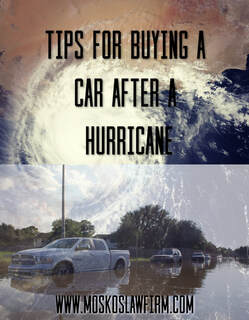
- Ask when the car was put up for sale. If the car was for sale before the hurricane, you still need to check for flood damage, but it means the seller had already intended to sell it and not just selling it because the car was flooded and repaired. If the car was only listed as for sale after the storm, and the seller is very motivated (is willing to lower the price and not try to negotiate with you), be wary of it. It is very possible that it was flooded during the hurricane and the owner is trying to sell it before any damage becomes obvious, such as electrical problems and rust.
- Ask if the car was flooded during the hurricane. Sellers must tell you about any damage that they are aware of, but you need to look for signs the car was flooded, too.
- Ask to see the title. If the car has a flood brand on the title, it means it has been underwater. It does not mean the vehicle has been repaired. Beware of this. Also understand that unscrupulous people may dry out a car and send it to another area with a new title.
- Ask for the car’s history report. If the dealer doesn’t offer it to you, ask. Check the date to be sure it is current and look where the car has been registered. If the dealer refuses to show you the report, walk away.
- Smell the car. The inside of flooded cars can be cleaned, but it is really hard to get rid of the musty smell. If the car smells strongly of air freshener, walk away as the seller may be trying to cover it up.
- Look for rust and dirt in unusual areas. Check areas under the hood where a quick washing may not have removed evidence of flooding.
- Check the flooring to see if it is new. New flooring in an older car is a sign that it was recently replaced – perhaps to disguise flood damage.
- Look at the headlights. It is hard to get water out of partially sealed areas, like lights. Fogging on the lights is another indication of flood damage.
- Be careful about underpriced cars. If it looks too good to be true, it probably is.
 RSS Feed
RSS Feed